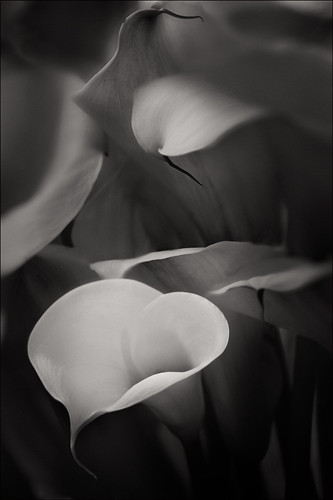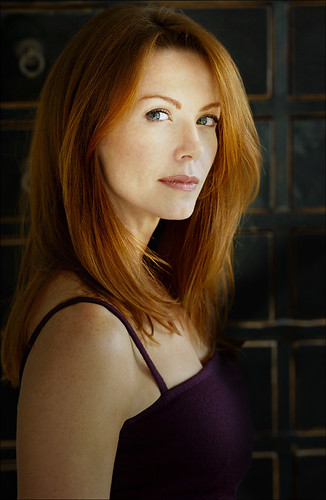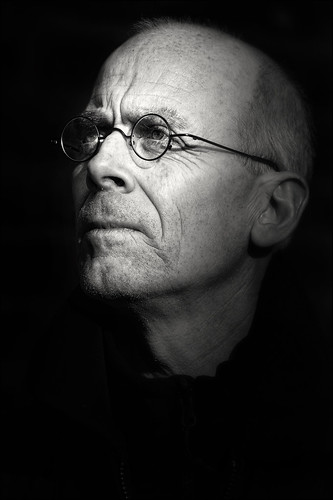
Copyright © Vincent Versace – ALL Rights Reserved
In addition to being a well known photographer, Vincent Versace is a "Smithsonian Award Laureate" whose work is part of the Smithsonian Institution's Museum of American History collection. He also enjoys the status of Epson Stylus Pro, X-Rite Coloratti and Lexar Elite Photographer. I hope you enjoy getting to know this well respected Photoshop/photography educator and true master printer.
Printers
Vincent Versace only prints on Epson printers. Currently his line up includes 6 Epson printers: the R1900, 2880 (2), 3880 (2) & 9900.
Favorite Papers
My favorite paper is Epson’s Cold Press Natural (Epson video). For 24x30 and 44x36 prints, I have been using Epson Velvet Fine Art but will be phasing that paper out in favor for the Cold Press Natural now that it is being offered in the roll format. I really wish that the Cold Press Natural would come in a size bigger than 17x22 as I would love to use it for my larger prints. Unlike some print masters, I prefer sheet paper to rolls. For my black and white I use Exhibition Fiber Fine Art paper - 24x30 down to 8.5x11. I think the Exhibition Fiber looks just like air dried glossy fiber silver gelatin paper, which was my favorite way to print black and whites when I made silver prints. It is the best looking paper for black and white, to my eye. I tend to print on matte papers because I prefer the way color looks on them.
What volume of printing do you do over the course of a year and what’s the purpose?
A lot. Easily several thousand prints a year. The sizes I print are - 44x36, 24x30, - 20x24 (cut from 24x30(, 300 - 17x22 (cut to16x20), and 13x19 and 8.5x11. The 13x19 and 8.5x 11 are or portfolios that I show at workshops and for buyers. Because these prints tend to take a beating, they get switched out after every other workshop/show/submission.
What things to look in a print before it’s ready for Fine Art Sale?
I want it to be as perfect as possible. I want to make sure there are no blocked up shadows, or over inking, and smooth transitions between shadows to highlights. I also check them to ensure that there are no post processing artifacts. This is why I carefully choose the Epson papers and printers that I use. They are best of class and nothing in my experience competes with them.
.

Copyright © Vincent Versace – ALL Rights Reserved
Do you have any printer usage recommendations?
I turn my printers off at the printer when they are not in use (NOT at the power strip). This guarantees that the heads are capped and the ink does not dry on the head. Doing this minimizes clogging of any nozzles. If you are using cotton fiber papers it is best to run a head cleaning after every five to ten prints. Cotton fiber papers can throw off particles that may clog heads, (no matter whose printer you use). I have also found that you really don’t need to do it after ever print unless you have a lot of time on your hands and money to waste on ink (unless of course you believe that you have the ability to see the fly poop in the paper).
Trust me, I am pretty anal about my printing and if I thought cleaning after every print mattered I’d do that. However, I just don’t think that it is necessary.
Have you tried using the any other brand of printers besides Epson?
I only use Epson printers because the ink paper and printer are all part of a system which is why I use exclusively Epson across the board. I believe they are the best printers for photography. Canon printers use a thermal head to lay down ink. Thermal systems use heat to eject ink which leads to overspray and I require more accurate drop placement. From the prints I have seen, I feel that they are not there yet. I also feel that the color drifts a bit and it is a little blocked up in the reds. I am more impressed with the HP printers over Canon, but again HP is nowhere near the quality I require for my images. Epson UltraChrome K3 and UltraChrome HDR inks are completely unbeatable.
Do you have any Color Management or Paper Profiling Recommendations?
I’m a real PITA with this. I travel with a ColorMunki (XRite Video) when I have to go mobile and remote for teaching. It does a really nice job for a device that size and it allows me to profile monitors, projectors and create image specific profiles. At my studio, I use a Spectrolino Spectroscan (made by Gretag Macbeth now X-Rite) because I prefer polarized profiles for my fine art prints. The down side with this device is that it takes several hours to build a profile. This is the only device I am aware of that can do this. I also use an X-Rite i1iSis XL Color Calibration System (B&H) but only for testing glossy/semi-gloss papers. The iSis XL is a great profiling device, and very fast which is why I use it. I tend to redo all of my profiles every six months.

Copyright © Vincent Versace – ALL Rights Reserved
Tips before printing and how to get the most out of the driver?
I tend to print in relative colormetric when I print as it provides more accurate color, but it is less forgiving. Soft Proofing is essential! I always print my black & white images through the Epson Advanced Black & White mode, setting warm color toning mode and the tone in the custom color controls dialog to dark. Another important thing to do is always set the platen gap to Wider when printing on Exhibition Fiber paper.
I find that the best PPI, for me, is 360. If you need to enlarge (scale) an image first in the image size dialog turn off “Resample Image” then lower the PPI to 240 from 360 or 300 PPI. If you need to go bigger I use Genuine Fractals. The worst way to up rez an image is the 10% stepping approach. It causes the most artifacts of any scaling approach.
What do you look for in a print before it gets your signature on the bottom?
Perfection. My signature on the bottom of a print means “This is the best that I can do - this is my state of the art.” If I feel that I cannot make that statement about the print I’m holding then I will not sign the image.
Do you use or prefer any RIP software? If so, what do you use it for?
When I use a RIP, I use the Serendipity Black Magic RIP it is the only RIP that uses it’s own screening algorithm with the 9900 all other RIP manufactures I know of use Epson’s screening. I like this RIP for my images that have a lot of blur, I only use this RIP, when I use a RIP at all, for 24x30 and bigger and only for my color images. Beyond that, I will use the Epson driver. The main reason to use a RIP is the difference in screening and ink control. If you need nesting and multi-image layout, then BlueCubit makes software that let’s you do that with the Epson driver. My thought though is if a RIP is going to use the same screening as the Epson driver, and the driver is free with the printer, then why bother?

Copyright © Vincent Versace – ALL Rights Reserved
Do you use any add-ins when preparing your image for printing?
I use Nik Software’s Silver Efex, Sharpener Pro, Color Efex, and Dfine, as well as onOne Software’s Genuine Fractals, and Focal Point.
Anything else that people should know about you as print master?
“The best photographer are always the best printers. But the best printers are not necessarily the best photographers.” – Unknown Source
These are my words to live by. If you want to be a better photographer, then you must become a better printer.
Conclusion
I’d like to thank Vincent Versace for taking time out of his busy schedule (which included a trip to New Zealand during this series preparation). His insight has been quite enjoyable and hopefully will help you to improve your own printing skills.
Disclosure
If you make purchases using the links provided, I will get a commission. I appreciate your supporting this blog by using the links provided!

No comments:
Post a Comment